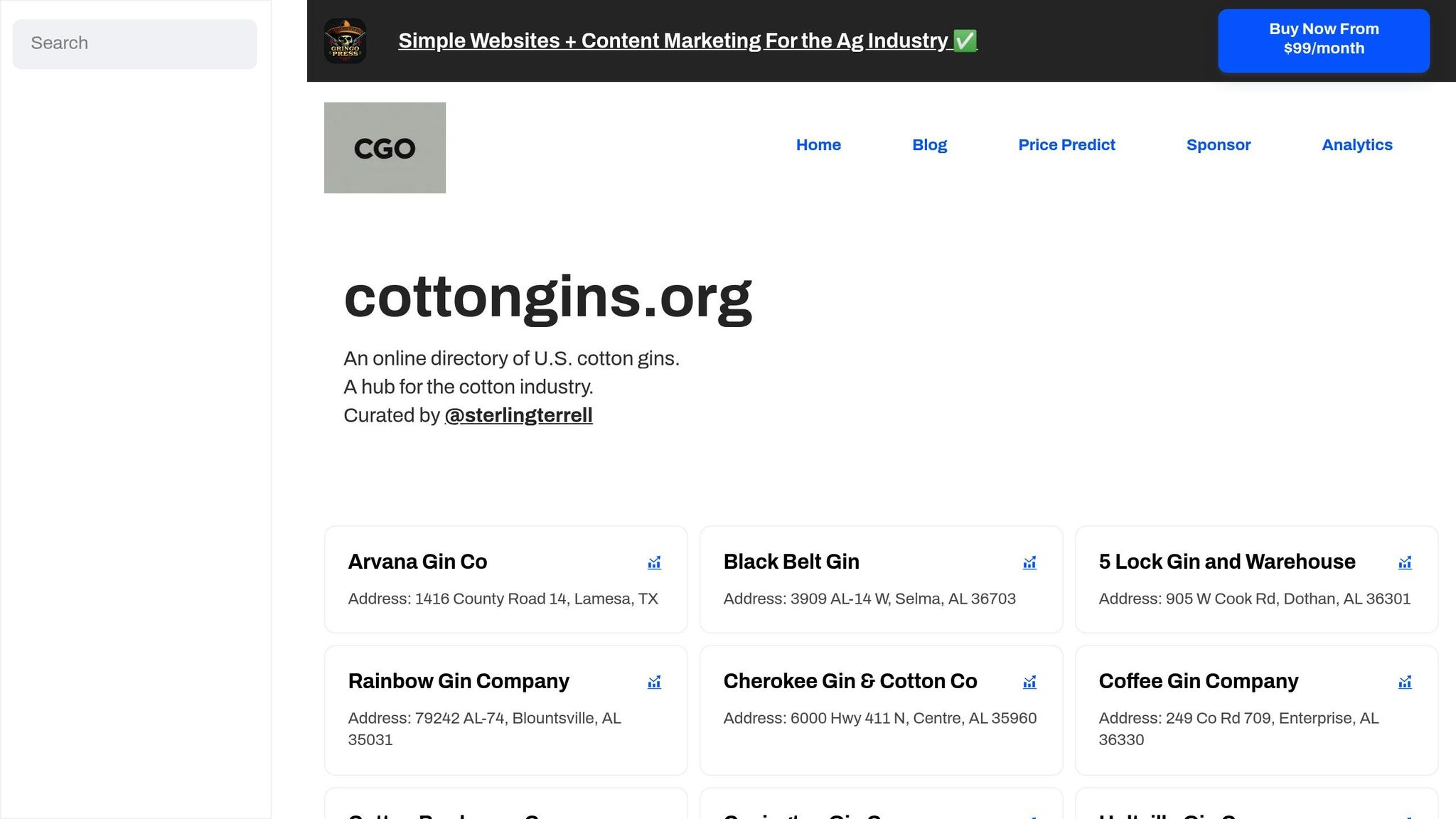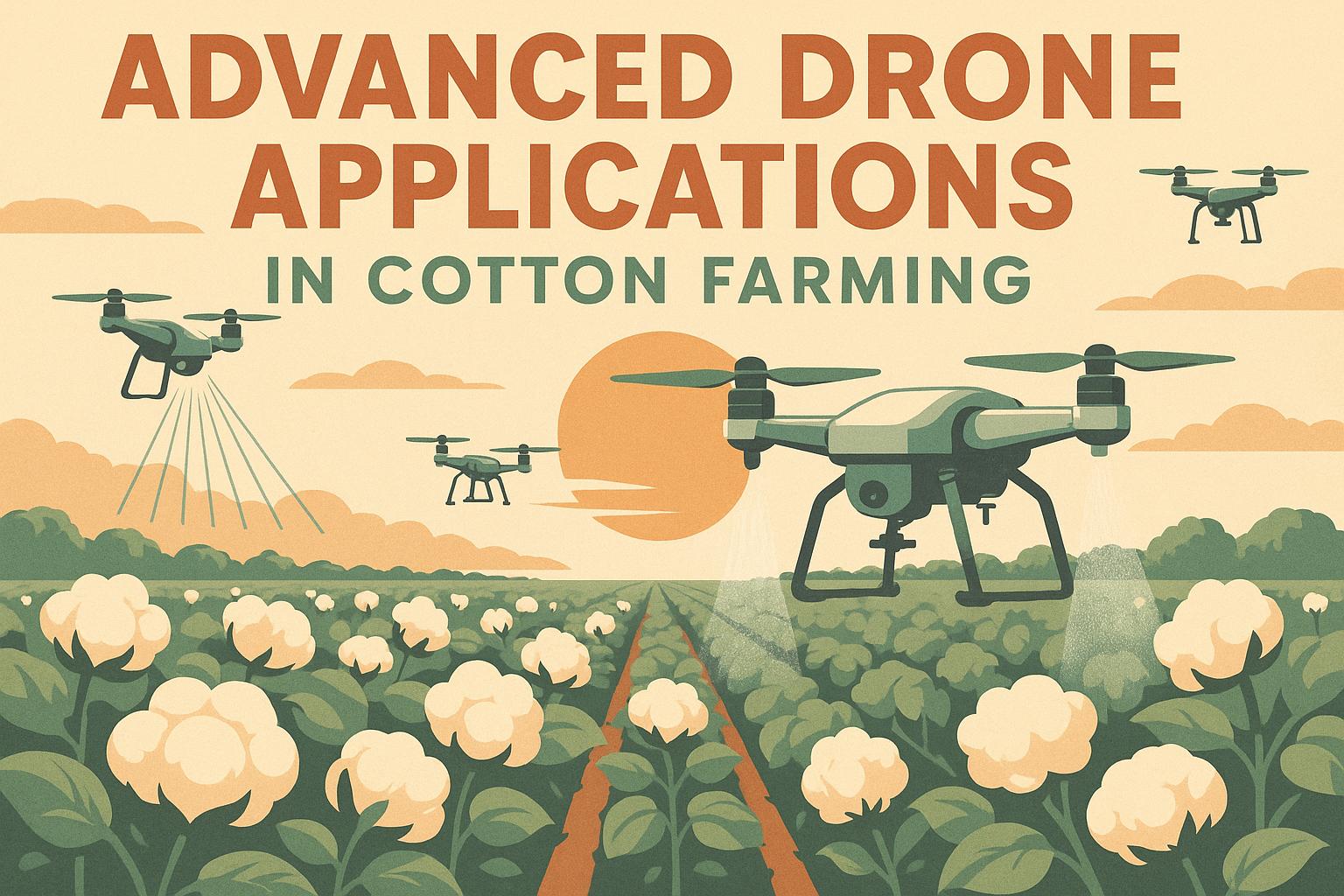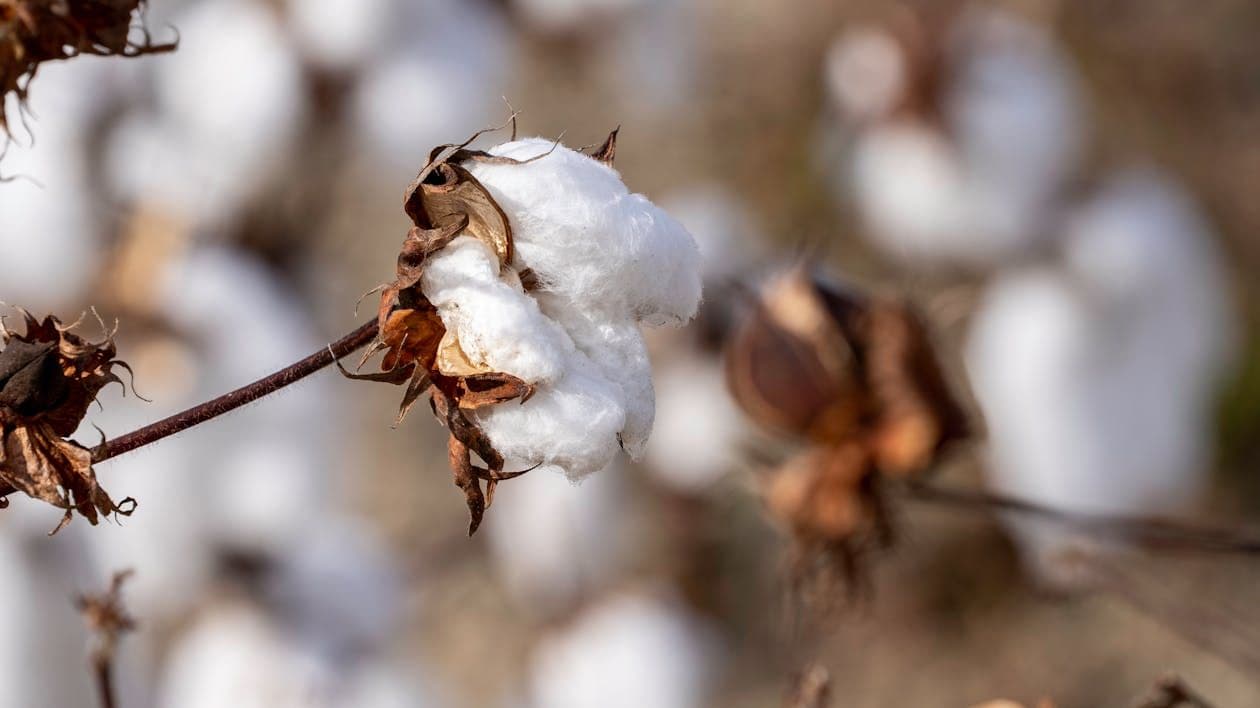Global cotton exports face delays due to infrastructure issues, trade policies, and unpredictable weather. These bottlenecks slow the journey of cotton from farms to international markets, impacting prices, delivery timelines, and the economies of producing nations. Key challenges include:
- Infrastructure problems: Outdated roads, limited rail systems, and congested ports cause shipment delays.
- Trade policies: Tariffs, subsidies, and complex regulations disrupt supply chains.
- Weather disruptions: Hurricanes, droughts, and floods damage crops and infrastructure.
Solutions include upgrading ports, improving rail and road networks, simplifying trade regulations, and adopting technology like digital tracking systems. Tools like cottongins.org help U.S. producers optimize logistics and reduce inefficiencies. Addressing these issues is crucial for maintaining global cotton trade efficiency and supporting farming communities.
Current State of Global Cotton Exports
Top Exporting and Importing Countries
The global cotton trade features a mix of well-established players and emerging contributors. The United States has long been a dominant exporter, valued for its consistent, high-quality cotton that meets the needs of premium textile producers. Brazil has also carved out a strong position, thanks to its favorable climate and modern farming techniques. Meanwhile, several West African nations play a vital role in diversifying the global supply chain.
On the demand side, countries with large textile industries are the main importers. China, despite its significant domestic production, imports substantial amounts of cotton to fuel its massive textile sector. Similarly, nations like Bangladesh, Vietnam, Turkey, and Pakistan increasingly depend on imported cotton to sustain their growing garment and textile industries.
Production and Trade Data
Global cotton production and export volumes are on the rise, driven by advancements in farming methods and a growing preference for natural fibers. Improvements in transportation and shipping logistics are also reshaping the market, making it easier to meet international demand.
Trade Policy Effects
Trade policies play a critical role in shaping the flow of cotton across borders. Tariffs, changing environmental regulations, currency fluctuations, and export financing terms all impact market dynamics. These factors often create logistical challenges, leading to regional bottlenecks that can disrupt supply chains.
How Banning Most Chinese Cotton Has Shifted Global Supply Chains | WSJ U.S. vs. China
Regional Bottlenecks and Their Effects
Global cotton exports often hit a snag due to severe port congestion. Many top cotton-producing areas struggle with limited port capacity, causing shipment delays and creating instability in cotton prices. These bottlenecks ripple through the entire supply chain, disrupting operations and planning.
Expanding port capacity is key to ensuring smoother trade and a more dependable supply chain. The next section dives into potential solutions to tackle these ongoing challenges.
sbb-itb-0e617ca
Solutions for Regional Bottlenecks
Addressing regional bottlenecks requires a mix of infrastructure upgrades, policy adjustments, and smarter resource management. These efforts can range from large-scale government programs to more efficient use of existing industry assets. The key lies in combining physical improvements, policy reforms, and technological advancements.
Infrastructure and Technology Upgrades
Expanding port facilities is a major priority for regions exporting cotton. This includes adding berths, deepening channels, and installing modern cargo-handling equipment to speed up processing times. Improved storage facilities near ports are equally important to ensure cotton meets the quality standards expected by international buyers.
Modernizing rail and road networks is another critical step. Better transportation systems help cut costs, speed up delivery, and protect the quality of cotton during transit.
Technology also plays a pivotal role. Tools like digital tracking systems, automated inventory management, and climate-controlled warehouses can help detect delays, optimize capacity, and address labor shortages. These advancements streamline operations and enhance overall efficiency.
Policy and Trade Reforms
Regulatory hurdles and market distortions can significantly disrupt cotton exports. Revising subsidies and simplifying trade policies are essential steps to remove these barriers. For instance, past subsidy programs in countries like the U.S., Greece, and Spain have artificially inflated producer prices. Similarly, retaliatory tariffs, such as China's 25% tariff on U.S. cotton in 2018, have forced exporters to divert shipments to alternative markets.
Trade liberalization offers promising benefits. Research suggests it could raise cotton prices by 12.7% and boost global trade by 5.8% over a decade. Temporary support measures can further enhance export efficiency during transitions to freer trade.
Streamlined regulations are another way to reduce delays at border crossings and ports. Digital documentation systems and harmonized standards between trading partners can speed up customs clearance and eliminate conflicting requirements. International partnerships, such as the Africa Growth and Opportunity Act (AGOA), demonstrate how cooperation can lower export barriers. Under AGOA, eligible African countries can export duty-free apparel to the U.S., showcasing the potential of collaborative policies.
Leveraging Resources Like cottongins.org

Platforms like cottongins.org are invaluable for improving export efficiency. This directory of U.S. cotton gin locations allows logistics planners to optimize routes from farms to ports, reducing empty truck miles and improving vehicle utilization. By providing accurate location data, the platform enhances supply chain visibility, especially during peak harvest seasons.
The site also creates opportunities for collaboration. Sponsorship features connect cotton gins with service providers, equipment suppliers, and logistics companies, fostering partnerships that can lead to better infrastructure and services. For international buyers, cottongins.org offers transparency, confirming that U.S. suppliers have the capacity to meet ginning demands. Additionally, its mailing list feature keeps stakeholders informed about changes in gin locations and capabilities, enabling proactive adjustments to supply chain strategies.
Conclusion: The Future of Cotton Exports
Addressing regional bottlenecks is crucial for countries aiming to stay competitive in the global cotton market. The financial implications are immense - just look at the $500 million annual drop in U.S. cotton exports to China after a 25% retaliatory tariff was imposed during the trade war.
"We must preserve our industry's status as a timely mover of quality U.S. cotton to customers worldwide." - Ted Schneider, Chairman of the National Cotton Council
This statement underscores the urgency for cotton-producing nations to act. Without tackling infrastructure issues, regulatory hurdles, and supply chain inefficiencies, countries risk losing their foothold in the market. This isn’t just a policy issue - it directly affects rural economies.
Take Australia, for instance. Cotton accounts for over 10% of the gross crop value in 24 Local Government Areas, with more than 75% of grower business expenses reinvested locally. When export bottlenecks arise, the ripple effects can devastate regional economies.
The solution lies in coordinated investments across infrastructure, policy reform, and technology. Tools like cottongins.org play a key role, helping to streamline logistics during critical harvest periods. Its route optimization features and sponsorship opportunities also strengthen industry partnerships, which are essential for long-term growth.
Collaboration among governments, industry leaders, and tech innovators is essential. Countries that adopt this collaborative approach will solidify their position in the global cotton trade. Those that hesitate may see their market share shift to more efficient competitors. A great example of the broader benefits of addressing bottlenecks comes from the Australian cotton industry, where 6.9% of employees identify as Aboriginal or Torres Strait Islander - well above the national average of 2.2% - showcasing how supply chain improvements can drive both economic and social progress.
The future of cotton exports will depend on treating bottleneck resolution as a strategic investment - not just in trade competitiveness, but in the sustainability of communities that rely on this vital industry.
FAQs
What are the biggest infrastructure challenges impacting global cotton exports, and how can they be resolved?
Global cotton exports are grappling with several infrastructure hurdles, including port congestion, insufficient rail and road capacity, container shortages, and increasing transportation costs. These problems frequently result in delays and higher expenses, throwing the supply chain off balance and lowering overall efficiency.
To overcome these obstacles, focused investments are crucial. Upgrading port infrastructure, expanding rail and road systems, and developing alternative export routes can significantly boost capacity. On top of that, adopting new technologies to simplify logistics and cut costs could make the cotton supply chain more resilient. Addressing these pain points will help the industry meet rising demand and ensure operations run more smoothly on a global scale.
How do trade policies and tariffs affect the global cotton supply chain and prices?
Trade policies and tariffs have a big influence on the global cotton market. High tariffs, like those seen during the trade disputes between the U.S. and China, can throw supply chains off balance, push up production costs, and weaken international demand. Take U.S. cotton exports, for instance - tariffs reaching as high as 65% have caused a steep decline in exports, driving down prices and creating market instability.
The effects don’t stop with cotton producers. These disruptions ripple through the entire supply chain, leading to higher costs for manufacturers and less availability for buyers. This kind of market volatility underscores the need to address supply bottlenecks and work toward smoother trade relations, helping to stabilize prices and maintain a steady supply.
How does technology help address regional bottlenecks in cotton exports, and how can cottongins.org improve supply chain efficiency?
Technology is transforming the cotton export industry by addressing regional challenges through better tracking, efficient logistics, and clearer communication. Tools such as RFID systems and blockchain are game-changers, allowing exporters to track shipments in real time, minimize delays, and ensure seamless coordination throughout the supply chain.
Resources like cottongins.org add another layer of efficiency by providing detailed insights into cotton gin locations and infrastructure. This information helps exporters and other stakeholders map out smarter transportation routes, lower costs, and improve logistics, making the entire export process smoother and more dependable.


